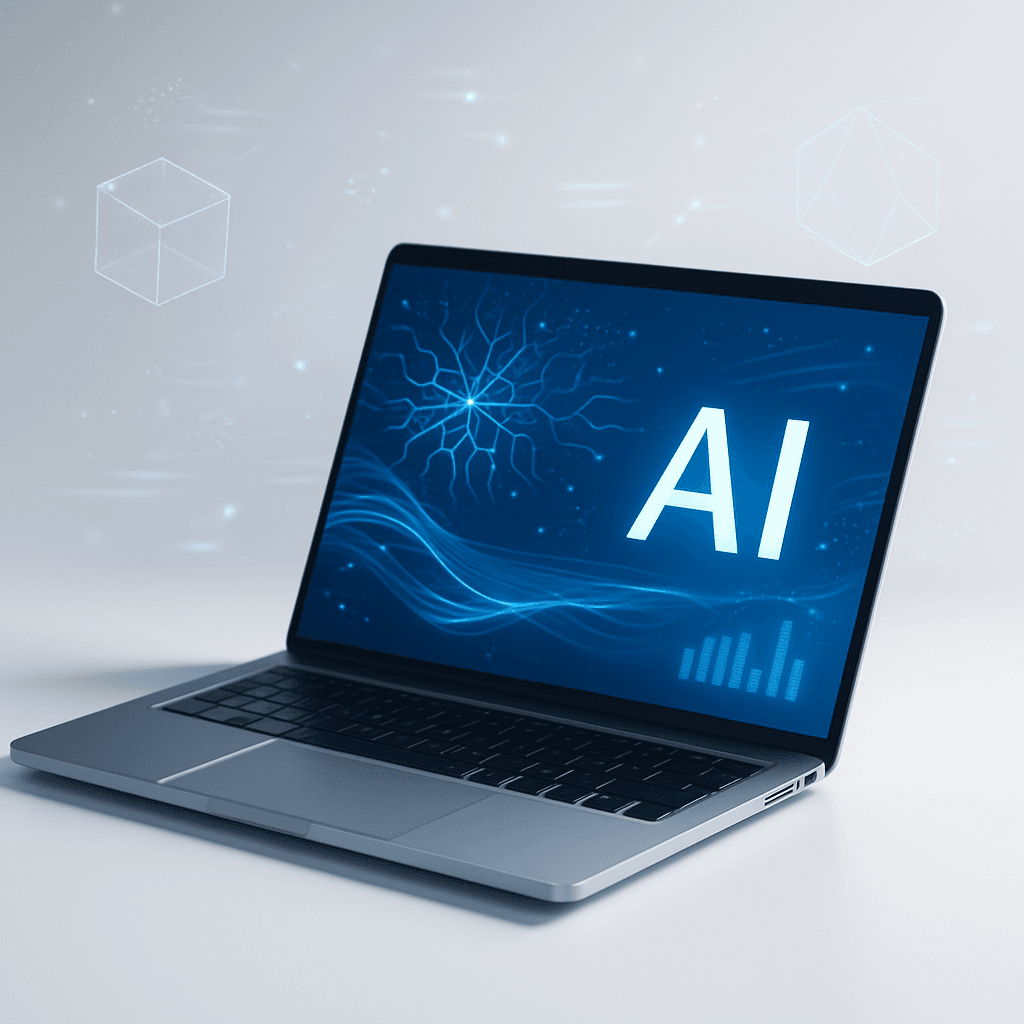Apple just dropped the M5 chip, and it's a monster leap forward for on-device AI. The company's latest silicon delivers over 4x the peak GPU compute performance compared to M4, while powering refreshed MacBook Pro, iPad Pro, and Vision Pro devices. This isn't just an incremental upgrade - it's Apple's biggest AI performance jump yet, built on third-generation 3nm technology that puts serious machine learning horsepower directly in users' hands.
Apple just rewrote the playbook for on-device artificial intelligence with today's M5 chip announcement. The Cupertino giant's latest silicon represents the most significant AI performance leap in Apple Silicon history, delivering over 4x the peak GPU compute performance compared to last year's M4 chip. The timing couldn't be more strategic as the AI arms race intensifies across the tech industry. Built on third-generation 3-nanometer technology, the M5 introduces a completely rearchitected 10-core GPU that embeds Neural Accelerators directly into each core. This design breakthrough allows AI workloads to run dramatically faster while maintaining Apple's legendary power efficiency. The approach contrasts sharply with competitors who rely heavily on cloud-based AI processing, giving Apple users the ability to run sophisticated machine learning models entirely on their devices. The performance numbers tell the story of Apple's AI ambitions. Beyond the headline-grabbing 4x AI performance boost, the M5 delivers up to 45% better graphics performance than M4 thanks to third-generation ray tracing capabilities. The CPU side isn't neglected either - Apple claims the M5 features the world's fastest performance core, with up to 10 total cores delivering 15% faster multithreaded performance over M4. What makes this particularly compelling is the unified memory architecture that's been expanded to 153GB/s of bandwidth - nearly 30% faster than M4. This massive memory pipeline feeds the chip's various processing units and enables something truly game-changing: running large language models completely on-device without cloud connectivity. The implications ripple far beyond raw benchmarks. Adobe Photoshop users can now run complex AI-powered filters locally, while developers using apps like LM Studio can prototype and test AI models without sending sensitive data to external servers. The enhanced memory capacity of 32GB means professionals can simultaneously run demanding creative suites like Final Cut Pro while AI workflows churn in the background. Apple's timing with the M5 launch directly challenges Nvidia's dominance in AI processing and puts pressure on Intel and AMD to respond. While those companies focus on discrete GPUs and data center chips, Apple's integrated approach brings professional-grade AI capabilities to laptops and tablets. The chip immediately powers three refreshed devices: a new , updated , and enhanced . All three devices are available for pre-order starting today, though Apple hasn't disclosed pricing or shipping dates yet. For the Vision Pro specifically, the M5 enables 10% more pixel rendering on the micro-OLED displays while pushing refresh rates up to 120Hz. This translates to crisper visuals and reduced motion blur - critical improvements for a headset banking on mainstream adoption. The broader competitive landscape shift is already becoming apparent. has been investing heavily in custom silicon for its Ray-Ban smart glasses and future VR devices, while continues developing its Tensor chips for Pixel devices. But Apple's M5 represents the most aggressive push yet toward making high-performance AI processing a standard feature rather than a premium add-on. Industry analysts are watching closely to see how quickly competitors can respond. Snapdragon X series has made strides in AI performance for Windows laptops, but the M5's integration of Neural Accelerators directly into GPU cores represents a fundamentally different architectural approach that could take years to match. The environmental angle shouldn't be overlooked either. By processing AI workloads locally rather than sending them to energy-intensive data centers, the M5 could significantly reduce the carbon footprint of AI-powered applications. This plays into Apple's broader sustainability narrative while delivering practical benefits like offline AI capabilities.












